Nestled between the Rio Grande and the rise of the Sandia Mountains, Albuquerque—known as the Duke City—invites travelers into a realm where the canvas is the sky. With the annual Albuquerque International Balloon Fiesta, neon-lit Route 66 nostalgia, indigenous cultural centers, and chile-drenched cuisine, every horizon in ABQ tells a story under the high desert sky.
1. Sandia Peak Tramway
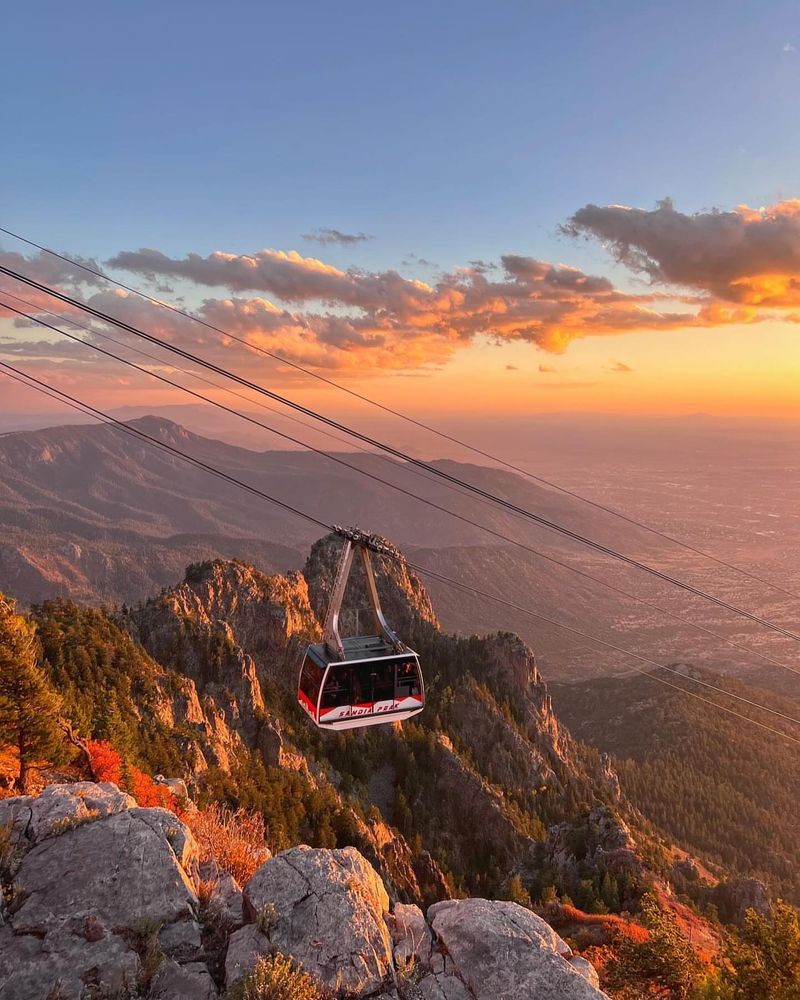
The Sandia Peak Tramway is your ticket to the skies, climbing 4,000 feet to 10,678 feet above sea level. Once the world’s longest aerial tram, it offers breathtaking views as it ascends over Albuquerque. Riders marvel at the sight of pinon, juniper, and pine as they emerge above the clouds.
At the summit, visitors enjoy a Swiss-designed café, TEN 3, with its panoramic city views. Trails beckon adventure seekers, offering sunsets that paint the sky in fiery hues. Winter and spring evenings provide the most stunning vistas, with the city and the Sangre de Cristo peaks bathed in a golden glow. It’s an experience that sets your spirit soaring.
2. Old Town Plaza & Route 66
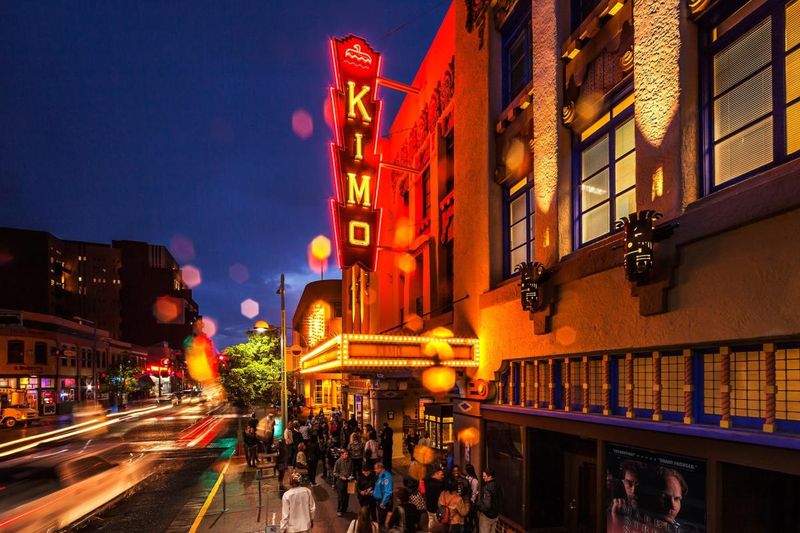
Step back in time at Old Town Plaza and along Route 66, where Albuquerque’s history comes alive. Founded in 1706, Old Town is a treasure trove of Spanish colonial charm, adobe architecture, and modern Southwestern flair. Stroll through courtyards that echo with mariachi melodies and explore shops offering local crafts.
Route 66 brings nostalgia with its neon signs lighting up motels and diners, a testament to the 1950s road-trip era. The KiMo Theatre, with its Pueblo Deco style, stands as a beacon of cultural history. As you wander, the stories of bygone eras unfold, blending with the vibrant arts scene that now thrives here.
3. Art and Culture in Albuquerque
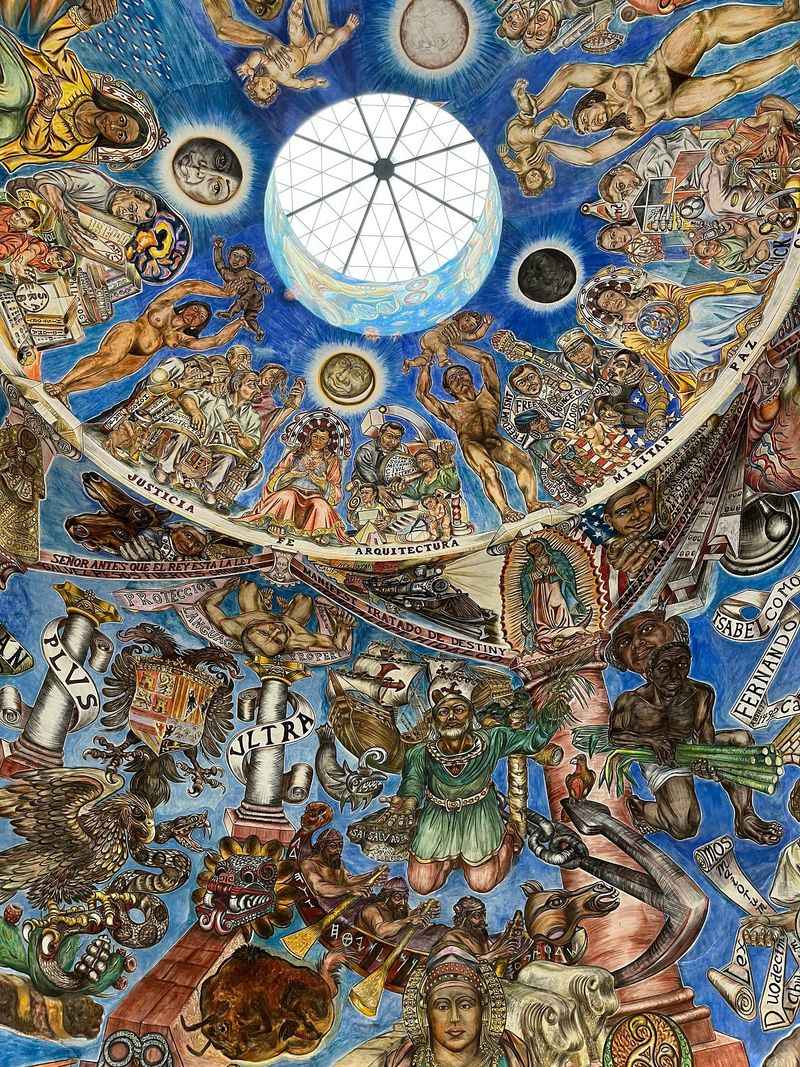
Albuquerque’s cultural tapestry is rich with indigenous and Latino influences. The Indian Pueblo Cultural Center is a testament to the city’s Native American roots, offering exhibits on Pueblo history, art, and dance. Nearby, the National Hispanic Cultural Center showcases rotating visual arts and performances.
One highlight is the Mundos de Mestizaje fresco by Federico Vigil—a sweeping masterpiece of over 3,000 years of cultural identity. Both centers offer a window into Albuquerque’s diverse heritage, with workshops and events that invite participation. Hispanic Heritage Month brings these cultures to life with free access and vibrant performances, celebrating the city’s dynamic spirit.
4. Chile Cuisine in Albuquerque
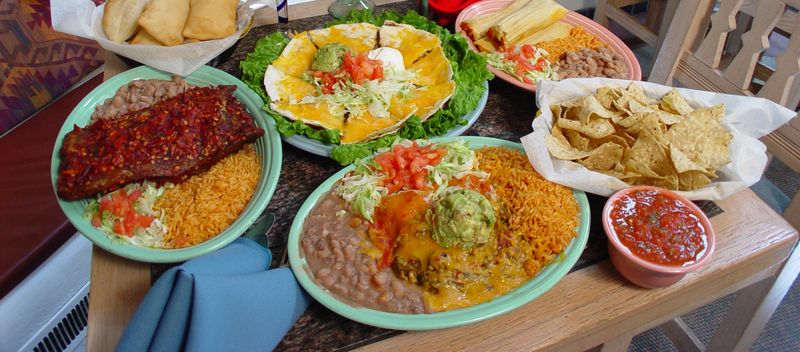
In Albuquerque, chile isn’t just a spice—it’s a way of life. The age-old question, ‘Red or Green?’ defines the local cuisine, with ‘Christmas’ as the answer for both. From green-chile cheeseburgers to red-chile enchiladas, each dish is a celebration of flavor.
Frontier Restaurant is a staple, known for late-night feasts drenched in chile. Sadie’s of New Mexico serves legendary red-chile breakfast burritos. Don’t miss biscochitos, the state cookie, spiced with cinnamon, anise, and chiles. Dining here is a journey of taste, where the vibrant food culture reflects Albuquerque’s spirited essence.
5. Albuquerque International Balloon Fiesta
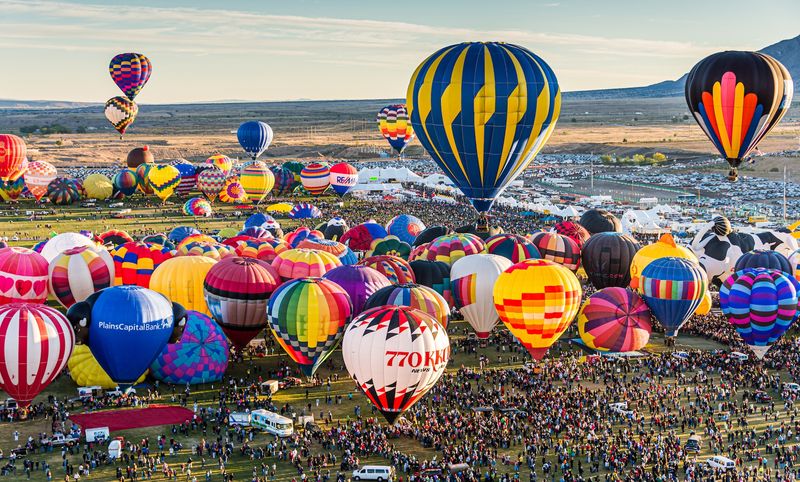
Each October, Albuquerque hosts the world’s largest gathering of hot-air balloons—the Albuquerque International Balloon Fiesta. Imagine over 500 balloons lifting into a clear sky, creating a dazzling spectrum against the morning light. This nine-day festival, which began with just 13 balloons in 1972, now attracts visitors from every corner of the globe.
At night, the Fiesta turns into a magical wonderland with the balloon glow events. The glowing balloons create a soft, ambient light that captivates all who attend. It’s not just a visual delight but an economic boon, generating over $180 million annually. For photographers, the event’s beauty is irresistible, especially during the Sunrise Mass Ascension.
6. Petroglyph National Monument
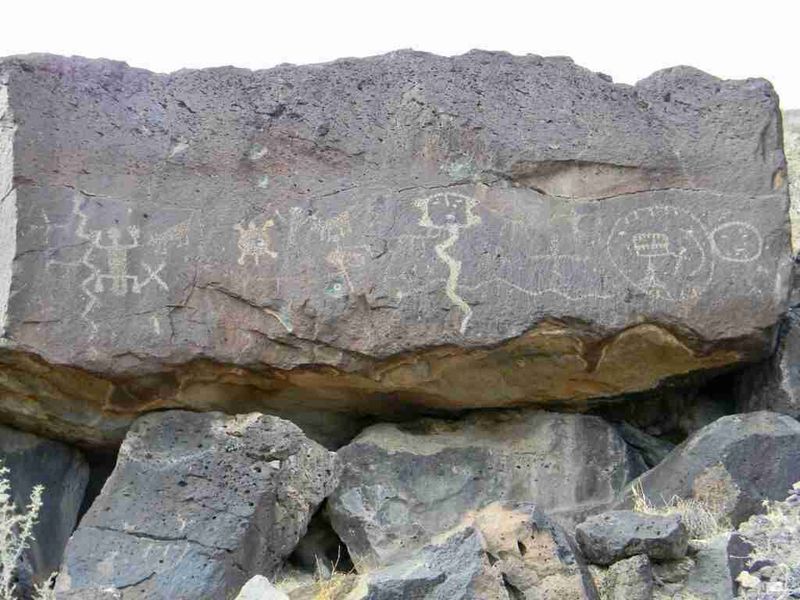
Petroglyph National Monument is a window into the ancient past, stretching across Albuquerque’s West Mesa. Home to over 30,000 rock carvings, it tells the stories of Ancestral Puebloans and early Spanish settlers. These petroglyphs, etched into volcanic basalt, depict animals, symbols, and figures.
As you walk the trails, each carving offers a glimpse into the spiritual and cultural significance of the region’s early inhabitants. The monument spans 17 miles, inviting exploration and reflection. It’s a place where history and nature intertwine, providing a serene escape within the city’s bounds. A visit here is like stepping into a living museum.
7. Paseo del Bosque Trail

The Paseo del Bosque Trail offers a serene retreat along the Rio Grande’s edge. This 13-mile scenic path winds through a lush cottonwood forest, providing a perfect escape for cyclists, walkers, and wildlife enthusiasts.
As you traverse the trail, the line between the city and nature blurs, with the Sandia Mountains as a constant companion. The path is a sanctuary for local flora and fauna, offering a glimpse into Albuquerque’s natural beauty.
Rent a bike downtown and journey north for a leisurely ride that culminates at the Petroglyph National Monument. It’s a journey through Albuquerque’s heart, where the landscape tells a tale of harmony between urban life and the wild.



